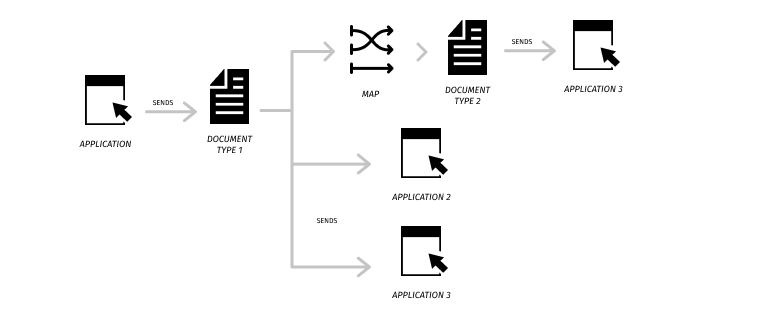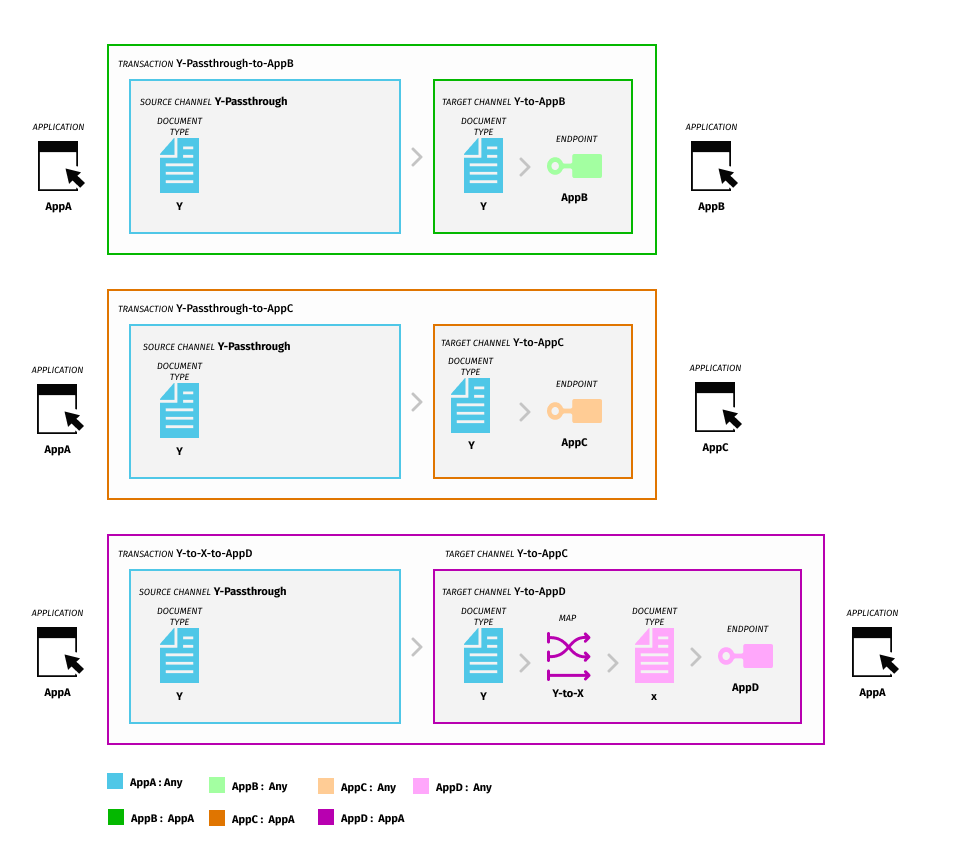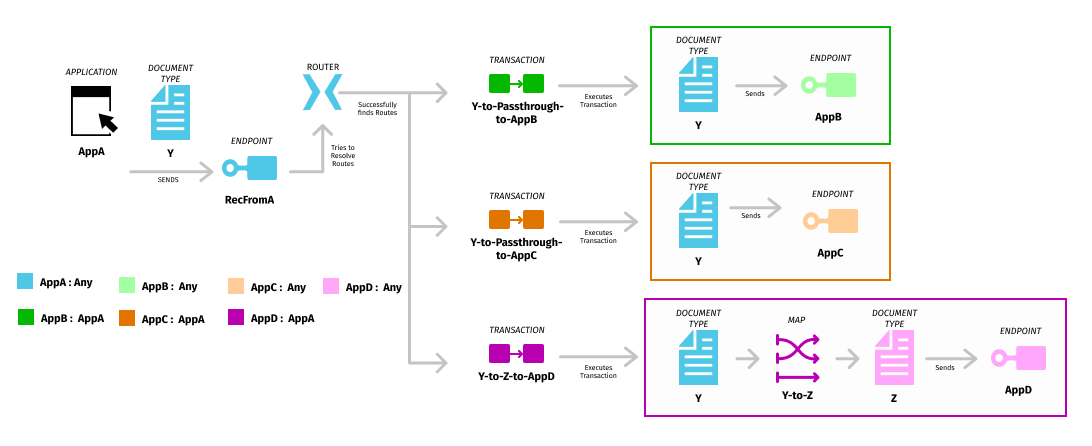Multicast Routing Scenario
In this example of a multicast routing scenario, an Application sends a Document to three other Applications. Two of the Applications require the Document as-sent; the third requires the payload to be mapped.

Background Reading
- Actors, Relationships and Artifacts
-
Introduces foundational PortX terminology.
- Transaction-Processing Framework
-
Explains how PortX works.
Actors
In this scenario, there are three Actors:
-
Application A (configured as AppA)
-
Application B (configured as AppB)
-
Application C (configured as AppC)
-
Application D (configured as AppD)
-
YourCompany B2B
-
Any
Relationships
There are seven Relationships in this scenario:
| Relationship | Description | Contains |
|---|---|---|
AppA : Any |
Universal relationship between Application AppA and any other Application |
Artifacts specific to transactions between AppA and any other Application |
AppB : Any |
Universal relationship between Application AppB and any other Application |
Artifacts specific to transactions between AppB and any other Application |
AppC : Any |
Universal relationship between Application AppC and any other Application |
Artifacts specific to transactions between AppC and any other Application |
AppD : Any |
Universal relationship between Application AppD and any other Application |
Artifacts specific to transactions between AppD and any other Application |
AppA : AppB |
The relationship between Application AppA and Application AppB. |
Artifacts used only between these applications. |
AppA : AppC |
The relationship between Application AppA and Application AppC. |
Artifacts used only between these applications. |
AppA : AppD |
The relationship between Application AppA and Application AppD. |
Artifacts used only between these applications. |

Artifacts
The tables and flow diagrams in this section identify:
-
Artifacts that must be configured in order for a given document to be routed (that is, not rejected)
-
The Relationship in which the artifacts are configured
AppA : Any
| Artifact | Artifact Name | Description | Configured on page |
|---|---|---|---|
AppRecFromA |
Endpoint on which you expect to receive documents from Application AppA |
||
Y |
Document Type you expect to receive from an application |
AppB : Any
| Artifact | Artifact Name | Description | Configured on page |
|---|---|---|---|
AppB |
Endpoint from which documents are sent to AppB. |
AppC : Any
| Artifact | Artifact Name | Description | Configured on page |
|---|---|---|---|
AppC |
Endpoint from which documents are sent to AppC. |
AppD : Any
| Artifact | Artifact Name | Description | Configured on page |
|---|---|---|---|
AppD |
Endpoint from which documents are sent to AppD. |
||
Z |
Document Type that AppD wants to receive |
AppA : AppB
| Artifact | Artifact Name | Description | Configured on page |
|---|---|---|---|
Y-to-B |
Target channel that passes documents of Document Type Y to AppB’s Endpoint |
||
Y-Passthrough-to-B |
Combination of Source Channel Y-Passthrough and Target Channel Y-to-AppB. When combined (with ?) it becomes a transaction that receives a document of Document Type Y and then sends it to the endpoint B. This transaction has the From Partner set to AppA and the To Partner set to AppB. |
Outcomes
AppA sends Document of Document Type Y to Endpoint RecFromA

PortX:
-
Receives the document on RecFromA
-
Attempts to resolve routes
-
Finds three Transactions
-
Y-Passthrough-to-B
-
Y-Passthrough-to-C
-
Y-to-X-to-D
-
-
Executes all transactions:
-
Sends Document of Type Y to Endpoint B.
-
Sends Document of Type Y to Endpoint C.
-
Maps Document of Type Y to Document Type X, then sends it to Endpoint AppD.
-